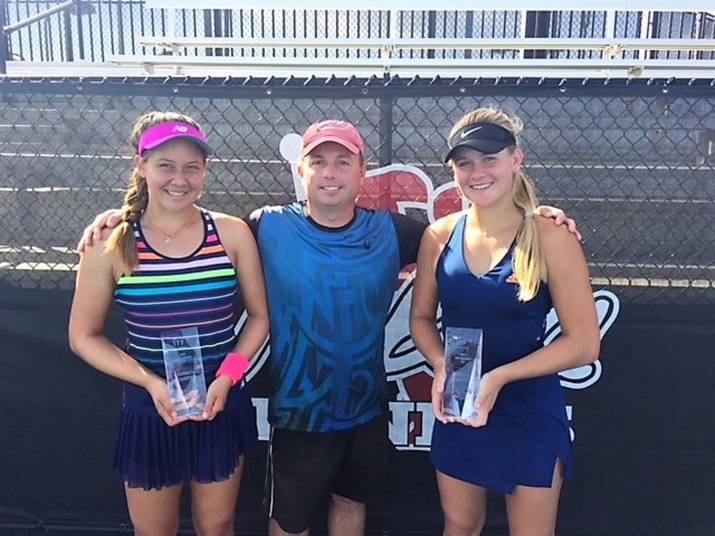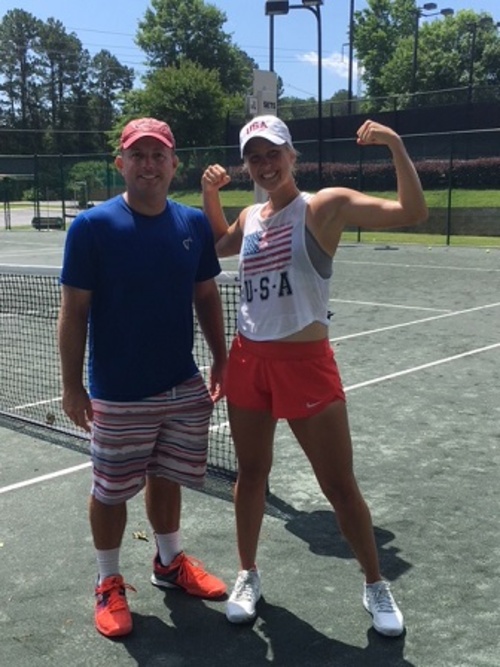Don't miss any stories → Follow Tennis View
FollowCoaches Corner: Tom Downs (Part Two)
Tom Downs has coached on the WTA Tour and has worked with Rennae Stubbs, Elenda Dementieva, Vera Dushevina, Sam Stosur and Laura Granville. He has also worked with many highly-ranked ITF and USTA junior players. He was the Head Pro and Director of Coaching at the Harold Solomon Tennis Institute in Fort Lauderdale, Florida. Tennis View Magazine recently sat down with him to discuss the sport, coaching, and his career.
How has the triangle theory that you developed worked for many different styles of players you’ve coached?
The triangle theory is just a simple theory that I use to help my players control points and play on their terms. The triangle is an imaginary area on the opponent’s side of the court. It is 3 regular sized racquet lengths inside the baseline and two regular size racquet lengths inside the singles sidelines. The idea is for the player to hit their first two balls (including the return) outside the triangle to establish immediate control of a point. With the majority of rallies on the pro circuit lasting between 0-4 shots, I believe that it is crucial to take control of the point immediately regardless of the style of player you are. It has helped players such as top 5 stars Sam Stosur and Elena Dementieva, top 40 player Vera Dushevina, and many others I’ve coached, all of whom have different game styles and playing structures, establish control of the points by hitting outside of this area. The triangle theory benefited a young American player I coached in 2016, Ashley Kratzer, who won super hardcourt nationals in 2017 and got a wildcard into the US open for doing so.

How have your coaching ways and philosophy evolved over the last five years?
I have always been coaching women, both pros, and juniors. The game has evolved a lot. Women are moving much better now than before, they are fitter, stronger and more powerful than before and therefore they hit the ball harder and heavier than before. The women are also serving bigger and more are looking to use their forehands as weapons to dictate play. Even those players that are dominant with their backhand or prefer their backhands are starting to use their forehands as weapons to control points because bigger forehands equal shorter points. Women are also looking to come forward and conclude at net more. My philosophy is that different things work for different players and it is important to get each player playing the right way. Not everyone can be dominant with their forehand. For example, if you coach someone similar to a Radwanska type, who happens to have better feel on the backhand side, has unbelievable court sense and happens to be crafty, you’ve got to make her play the right way and maximize her strengths while continuing to improve all parts of her game.
What is a typical day coaching like for you?
A typical day during a training week at home is 2 hours on court in the morning, 2 hours in the afternoon and an hour of fitness each day. During tournaments, there’s pre-match warm-ups, post-match hitting sessions and gym sessions, pre and post-match conversations and scouting of opponents in addition to observing the matches.

What advice would you have for young and inexperienced players?
The best advice I could give is that there are no shortcuts to the top. You have to take the necessary steps to get to the top of the sport. Rome wasn’t built in a day.
Where do you see the sport changing or evolving from a coaching perspective over the next decade?
From a coaching perspective, I think the standard of coaching will continue to get better. This will happen because there will be more high-performance coaching courses that coaches will have to take in order to coach good players. I think that coaches must keep up with all the evolvements in the game and be on the cutting edge of the sport.
For part one of this two-part interview, visit http://www. tennisviewmag.com/tennis-view-magazine/article/coaches-corner-tom-downs-part-one










